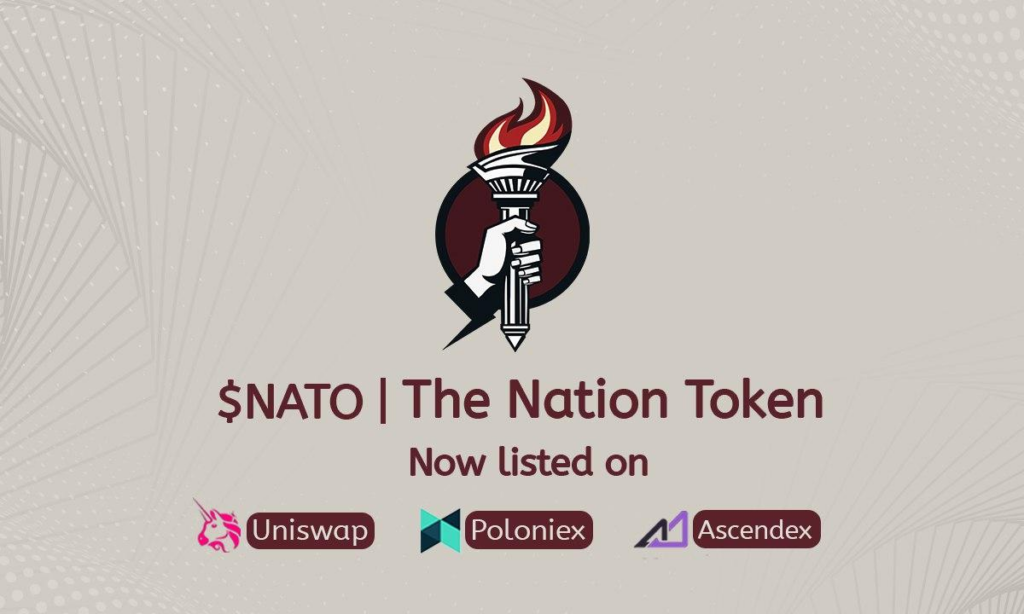
What Is NationToken (NATO)?
NationToken (NATO) is a community-driven token on the Base blockchain, born out of a reflection on the increasing centralization in the cryptocurrency space. Its core objective is to redefine power distribution by returning control to ordinary holders through a massive airdrop and a robust governance mechanism. Unlike many projects driven by internal teams, NATO emphasizes “people’s governance” where every token holder has a voice in key decisions.
In December 2024, NationToken (NATO) was officially launched via one of the largest airdrop events in history, distributing 74 billion tokens (representing 74% of the total supply) evenly across 1 million active Base wallets. This strategy not only quickly expanded the holder base but also laid the groundwork for future decentralized governance.

NATO Airdrop: Why It Has Drawn Widespread Attention
Airdrops are a common method for crypto projects to attract users and build communities, but NATO’s implementation is particularly notable due to:
-
Scale and Fairness:
Every eligible Base wallet received 740,000 NATO tokens, effectively preventing “whale monopolies.” -
Liquidity Lock:
The team has locked the Uniswap liquidity pool until January 1, 2030, which reduces short-term selling pressure and enhances investor confidence. -
Base Chain Advantages:
As a Layer 2 solution supported by Coinbase, Base is renowned for its low fees, high speed, and Ethereum compatibility, providing NATO with a stable technological foundation.
Following the airdrop, NATO quickly listed on Uniswap, AscendEX, and Poloniex, with potential listings on other platforms in the future. Investors interested in trading NATO should follow JuCoin’s announcements for real-time updates.
Decentralized Governance: How NationToken (NATO) Empowers The People
NATO’s core philosophy is to break the centralization trend in cryptocurrencies. Its governance framework is being refined through three main steps:
Decentralized Token Distribution
74% of NATO tokens are distributed via airdrop. The use of the remaining tokens has not yet been disclosed, but the team promises to avoid central control by the internal team.
Governance Platform Development
The governance voting system is in its final development stage. In the future, token holders will be able to propose and vote on key decisions—such as fund allocation and protocol upgrades—that will shape the project’s roadmap.
Long-Term Commitment
The liquidity lock until 2030 signals the team’s long-term commitment to decentralization rather than short-term arbitrage.
This model stands in stark contrast to many “governance tokens” where key decision-making power is retained by the founding team. NATO strives to ensure community-led control through its code and governance rules.
Future Challenges & Opportunities For NationToken (NATO)
Despite its ambitious vision, NATO faces several real-world challenges:
Market Volatility Risk
A massive airdrop might trigger early sell-offs. Although liquidity is locked to mitigate this, the token’s value still needs support from actual use cases.
Governance Efficiency Issues
Decentralized governance can slow down decision-making. NATO will need to strike a balance between fairness and efficiency.
Ecosystem Expansion Requirements
Currently, NATO primarily serves as a governance token. In the future, it must integrate into DeFi, payment, and other applications to enhance its utility.
On the other hand, the rapid development of the Base blockchain offers NATO potential opportunities. With Coinbase’s continued investment in the Layer 2 ecosystem, assets on Base—including NATO—could attract more institutional and individual users.
How To Participate In The NationToken Ecosystem?
Holding & Trading
NATO is already listed on Uniswap, AscendEX, and Poloniex. Investors can buy and sell through either decentralized or centralized platforms.
Following Governance Developments
Once the governance platform is live, token holders should actively participate in voting to directly influence the project’s direction.
Risk Assessment
While the decentralized mechanism reduces the risk of “rug pulls,” token prices remain subject to market sentiment and competitive pressures. Rational analysis is essential.
NATO’s experimental model provides an important reference for the crypto community—it shows that with thoughtful design and rule enforcement, the vision of decentralization can gradually become a reality. However, its long-term success will depend on community cohesion and the expansion of practical use cases.






